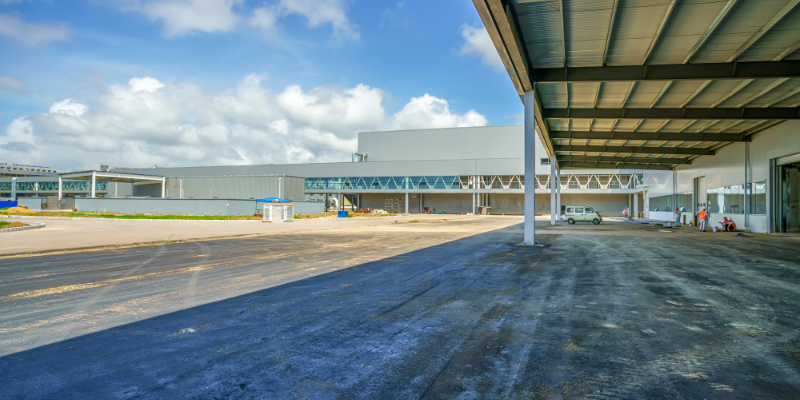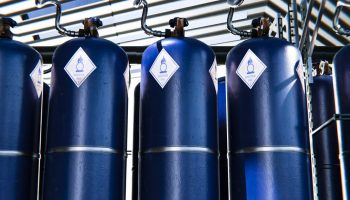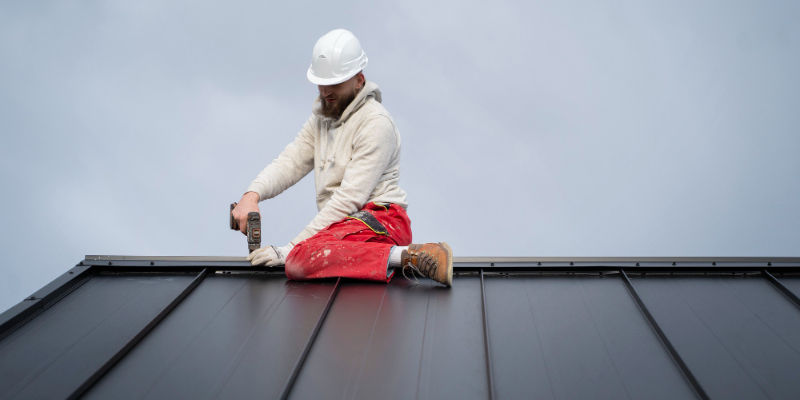As someone who’s been working on rooftops for years—everything from small office buildings to large warehouses—I’ve seen just about every kind of problem commercial flat roofing can throw at you. And trust me, when it comes to deciding between repairing your roof or replacing it entirely, the choice isn’t always black and white.
Many business owners ask me the same question: “Do I really need to replace the whole roof, or can we just patch it up?”
My answer depends on the condition of the roof, the type of material, and the long-term goals for the building. In this post, I’ll walk you through the key factors I consider on the job and provide practical advice to help you make the right call.
What Unique Challenges Do Commercial Flat Roofs Have?

Flat roofs are a different beast compared to pitched residential ones. Instead of water rolling right off, flat roofing has to deal with standing water, debris build-up, and heavy wear and tear from weather.
That means even small issues—such as a cracked seam or clogged drain—can lead to major headaches if left unaddressed. The best solution? You can also consider consulting Cleveland roofing companies for an effective solution.
The most common problems I see with commercial flat roofing include:
- Ponding water that lingers after rainstorms.
- Membrane damage, such as punctures, cracks, or blisters.
- Poor drainage systems are causing water to back up.
- Flashing issues around edges, vents, and HVAC units.
- General wear and tear from age or UV exposure.
When these problems show up, you’ve got two main choices: repair the damage or replace the whole system. Let’s break down when each option makes sense.
When Does A Roof Repair Make Sense?
In many cases, repairing a commercial flat roof is the most cost-effective and practical solution. Here are situations where a repair usually does the trick:
1. The Damage Is Localized:
If you have a small leak, a puncture from dropped tools, or damage confined to one area, a repair is often sufficient. For example, I once worked on a warehouse where a forklift operator accidentally gouged the roof membrane near the loading dock. Instead of tearing everything out, we patched and sealed the spot, and it held up perfectly for years.
2. The Roof Is Still Relatively Young:
Most flat roofs—whether it’s TPO, EPDM, or modified bitumen—have a lifespan of 15–25 years, depending on maintenance. If your roof is under 10 years old and showing isolated issues, I’d lean toward repairing it.
3. Budget Constraints:
Not every business has the budget to replace an entire roof on short notice. Repairs can buy you time to plan for a future replacement without breaking the bank in the meantime.
When Is Roof Replacement A Better Choice?
Of course, repairs can only go so far. Sometimes replacement is the smarter long-term investment. Here’s when I recommend going all-in on a new roof:
1. Widespread Damage:
If you’ve got leaks popping up in multiple places, or if large sections of the membrane are cracked and brittle, repairs won’t be reliable. Patching one spot after another quickly becomes a money pit.
2. The Roof Is Close To The End Of Its Lifespan:
Once a flat roof is 20+ years old, you’re living on borrowed time. Even if you fix one issue, another will likely follow soon. At this point, replacement is usually the more cost-effective option.
3. Energy Efficiency Concerns:
Older flat roofs may not meet today’s insulation standards. A new roof system can help reduce energy costs, especially for large commercial buildings where heating and cooling bills quickly add up.
4. Recurring Drainage Issues:
If your flat roof consistently holds water even after multiple repairs, that’s a sign that the slope or drainage design isn’t correct. A replacement gives you the chance to correct those issues permanently.
How To Evaluate Your Roof? A Step-By-Step Guide:
Whenever I’m called to inspect a commercial flat roof, I follow a straightforward evaluation process. Here’s a step-by-step version you can use as a guide:
- Inspect the Surface: Look for visible cracks, blisters, punctures, or worn-out areas.
- Check for Ponding Water: After rain, inspect to see if water is draining properly or pooling for days.
- Examine Flashing and Seams: Most leaks I find are due to failed flashing or seam splits.
- Assess Age: Know when your roof was installed and what material was used.
- Review Maintenance Records: A well-maintained roof lasts longer; a neglected one won’t.
- Consider Interior Damage: Water stains on the ceilings or walls inside your building are a red flag.
After going through these steps, you’ll have a clearer picture of whether repair or replacement is the right move.
What Are The Common Mistakes You Should Avoid?
Over the years, I’ve noticed business owners often make the same mistakes with their flat roofs:
- Delaying small repairs until they snowball into expensive problems.
- Choosing the cheapest contractor instead of hiring someone experienced with flat roofing systems.
- Ignoring drainage issues, thinking they’ll resolve on their own.
- Over-patching – after five or six different repairs, it’s usually time to stop sinking money into band-aid fixes.
Avoiding these pitfalls can save you a ton of money and stress in the long run.
Pro Tips from a Roofer Who’s Been There
- Schedule routine inspections at least twice a year, ideally in the spring and fall.
- Clean your drains and gutters regularly to prevent water from backing up.
- Use high-quality repair materials that match your roof system; avoid using mismatched patches.
- Plan—if your roof is more than 15 years old, start budgeting for replacement even if it looks okay now.
Commercial Flat Roofing: Repair Or Replace?
Ultimately, the decision comes down to the age of your roof, the extent of the damage, and your long-term goals for the building. A solid repair can extend the life of a younger roof and save you money. However, if your roof is exhibiting widespread problems or nearing the end of its lifespan, replacement is usually the more prudent choice.
So, if you’re still unsure about whether to repair or replace your commercial flat roof, don’t sweat it. That’s what professional roofers like me are here for. Every roof is unique, and an on-site inspection is the best way to determine this for sure.
Contact a trusted roofer in your area, request a detailed inspection, and obtain both repair and replacement estimates. That way, you’ll have all the facts to make the best decision for your building and your budget.
Read Also:




























